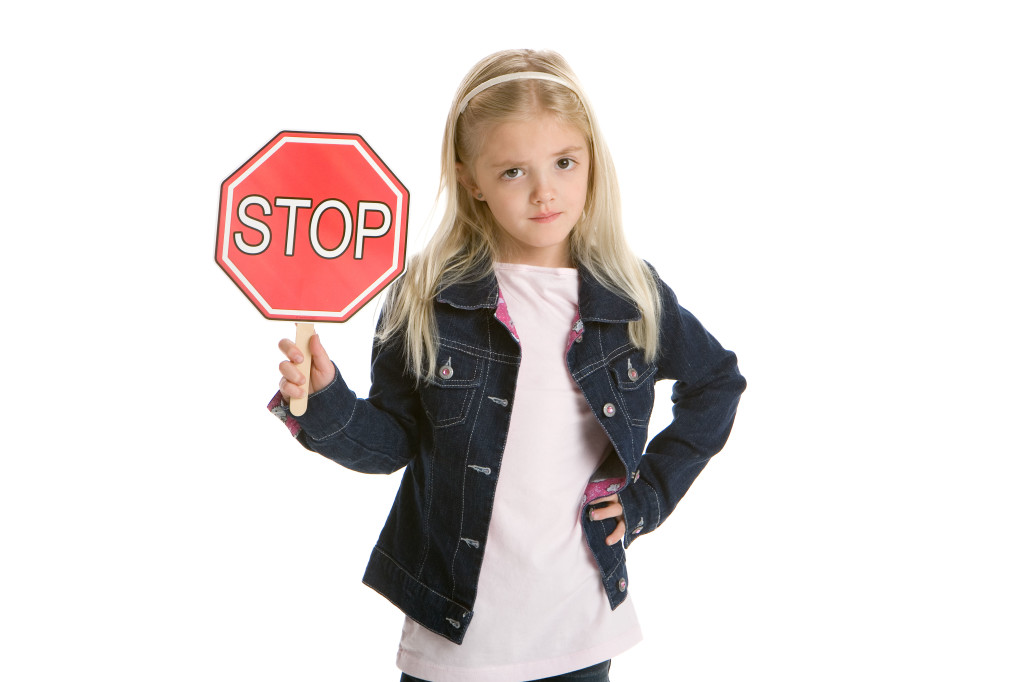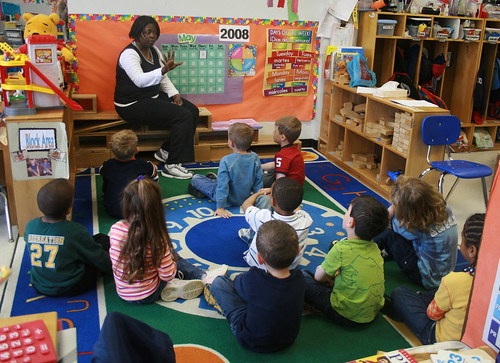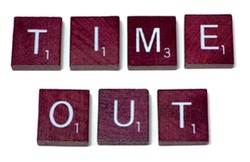As a BCBA, I am often asked to address problematic behaviors. One of the most common errors I see in addressing such behaviors is that the adults working with child have not identified the function (or purpose) of the problematic behavior. Decades of research have shown that there are only four functions for any behavior: attention, escape/avoidance, access to a tangible, and automatic reinforcement (or something that just feels good internally, but cannot be observed by outsiders).
The function of the behavior is whatever happens immediately after the behavior, and increases the likelihood that the behavior will occur again in the future. Here are a few examples of the functions, based on the same behavior:
- The therapist tells Lisa it’s time to practice tying shoes. Lisa starts biting her own hand. The therapist look shocked and calls in Lisa’s mother, who rubs her back lightly while Lisa ties her shoes then gives her a lot of verbal praise. This is likely an example of a behavior that functions for attention, because the mother comes in and provides both verbal and physical attention while she ties her shoes. Or it could be an example of a behavior that functions for escape or avoidance, since Lisa did not have to tie her shoes immediately once she began biting her hand.
- The therapist tells Lisa it’s time to practice tying shoes. Lisa starts biting her own hand. The therapist gently pushes Lisa’s hand down and then introduces a new task. This is an example of a behavior that functions as escape because Lisa does not have to tie her shoes once she begins biting her hand.
- The therapist tells Lisa it’s time to practice tying shoes. Lisa starts biting her own hand. The therapist says, “Oh, don’t stress, we’ll take a sensory break,” and gives Lisa a ball to squeeze. This is an example of a behavior maintained by tangible reinforcement. When Lisa began biting her hand she was immediately given access to a preferred item.
You’ll notice that I left out the automatic reinforcement. This is intentional because often, with a diagnosis of Autism Spectrum Disorder, people assume that a behavior is automatically reinforced instead of exploring these three potential functions described above. One way to recognize if a behavior is automatically reinforced is to note if the behavior happens when the child is alone and/or when no demands have been placed on the child. If it’s only happening around other people or when demands are placed, then it is highly unlikely that the behavior is automatically reinforced. For now, we’ll save automatic reinforcement for another blog post.
Identifying which of these functions is maintaining a problem behavior is essential to putting in an effective intervention. But how do you go about doing this?
The first thing you should do is assess! You can do an informal assessment, such as using the Functional Assessment Screening Tool (FAST) which is comprised of 16 questions that can help you quickly determine the function. If this does not provide conclusive results, you can have a BCBA do a formal functional assessment. Once you have identified the function of the behavior, you can change the environment so that not only does the child no longer receive that reinforcement for a problematic behavior, but there are appropriate replacement behaviors they can engage in to access that reinforcement. For more on that, you can look back at the Importance of Replacement Behaviors.
It may be difficult at first to think in terms of “function of behavior,” rather than assigning a reason for the behavior that is based on the child’s diagnosis or based on something happening internally inside the child’s brain that we can’t see (such as, “she’s just frustrated so she’s biting her hand,” or “she doesn’t know how to control herself”). However, once you try it out and experience some success with addressing the true function of behavior, you’ll likely see the beauty of a simple explanation for why we behave.
WRITTEN BY SAM BLANCO, MSED, BCBA
Sam is an ABA provider for students ages 3-12 in NYC. Working in education for ten years with students with Autism Spectrum Disorders and other developmental delays, Sam has developed strategies for achieving a multitude of academic, behavior, and social goals. Sam is currently pursuing her PhD in Applied Behavior Analysis at Endicott College.




 For example, let’s say Harold frequently won’t get up independently on weekdays before school. It’s driving his parents crazy, because they have to drag him out of bed several days a week. You may set up a DRH to increase the rate of him getting up independently. Since Harold currently gets up independently at least one time per week, you would set the goal for two times per week. (You don’t want to set the goal too high, because then Harold might not ever come into contact with reinforcement, and his behavior will likely remain unchanged.) Let Harold know that if he gets up independently two days in a row, you will make his favorite breakfast on the second day. Once Harold has met this goal a few time, increase the requirement for reinforcement. You would move from two days in a row to three days in a row in order to receive his favorite breakfast.
For example, let’s say Harold frequently won’t get up independently on weekdays before school. It’s driving his parents crazy, because they have to drag him out of bed several days a week. You may set up a DRH to increase the rate of him getting up independently. Since Harold currently gets up independently at least one time per week, you would set the goal for two times per week. (You don’t want to set the goal too high, because then Harold might not ever come into contact with reinforcement, and his behavior will likely remain unchanged.) Let Harold know that if he gets up independently two days in a row, you will make his favorite breakfast on the second day. Once Harold has met this goal a few time, increase the requirement for reinforcement. You would move from two days in a row to three days in a row in order to receive his favorite breakfast. There are a few different ways to implement DRL. You might select a target number of times the behavior can be exhibited within a full session, then deliver reinforcement to the individual if they exhibit the behavior that number of times or less within the session. For example, Gina teaches in a preschool where they have a 5-minute circle time each morning. During circle time, a boy named Luke raises his hand constantly. Gina wants to reduce the number of times he raises his hand during circle time, but she does not want to eliminate the behavior altogether. She took some baseline data and discovered that he raised his hand approximately 12 times during each circle time. Gina decided that Luke would be allowed to go to the water table, (his favorite activity,) if he raised his hand 10 times or less during circle time. This is called a criterion limit. As his behavior decreased, she would decrease the number of times he was able to raise his hand in order to access reinforcement. Her goal was to get him down to 3 instances of raising his hand during the circle time activity. This procedure for DRL is useful in a classroom setting, because it does not require the teacher to take a lot of data or keep track of intervals, though that might be appropriate in other situations.
There are a few different ways to implement DRL. You might select a target number of times the behavior can be exhibited within a full session, then deliver reinforcement to the individual if they exhibit the behavior that number of times or less within the session. For example, Gina teaches in a preschool where they have a 5-minute circle time each morning. During circle time, a boy named Luke raises his hand constantly. Gina wants to reduce the number of times he raises his hand during circle time, but she does not want to eliminate the behavior altogether. She took some baseline data and discovered that he raised his hand approximately 12 times during each circle time. Gina decided that Luke would be allowed to go to the water table, (his favorite activity,) if he raised his hand 10 times or less during circle time. This is called a criterion limit. As his behavior decreased, she would decrease the number of times he was able to raise his hand in order to access reinforcement. Her goal was to get him down to 3 instances of raising his hand during the circle time activity. This procedure for DRL is useful in a classroom setting, because it does not require the teacher to take a lot of data or keep track of intervals, though that might be appropriate in other situations. DRA is “a procedure for decreasing problem behavior in which reinforcement is delivered for a behavior that serves as a desirable alternative to the behavior targeted for reduction and withheld following instances of the problem behavior (e.g., reinforcing completion of academic worksheet items when the behavior targeted for reduction is talk-outs)” (Cooper, Heron, & Heward, 2007). The key thing to remember here is if you are implementing a DRA, a specified alternative behavior has been selected for reinforcement.
DRA is “a procedure for decreasing problem behavior in which reinforcement is delivered for a behavior that serves as a desirable alternative to the behavior targeted for reduction and withheld following instances of the problem behavior (e.g., reinforcing completion of academic worksheet items when the behavior targeted for reduction is talk-outs)” (Cooper, Heron, & Heward, 2007). The key thing to remember here is if you are implementing a DRA, a specified alternative behavior has been selected for reinforcement. DRI is not always the best option. For example, it may be very challenging to come up with an incompatible behavior. Or, in the case of self-injurious or aggressive behavior, it may be dangerous to use such an intervention.
DRI is not always the best option. For example, it may be very challenging to come up with an incompatible behavior. Or, in the case of self-injurious or aggressive behavior, it may be dangerous to use such an intervention. In B.F. Skinner’s phenomenal book The Technology of Teaching, he briefly discusses problems with punishment. He explains that the use of punishment (defined as adding or subtracting something from the environment in order to reduce the occurrence of a behavior), is not as clear-cut as we might imagine. When we attempt to punish a behavior, it’s quite likely that we will unintentionally suppress a broader range of behaviors than we intended.
In B.F. Skinner’s phenomenal book The Technology of Teaching, he briefly discusses problems with punishment. He explains that the use of punishment (defined as adding or subtracting something from the environment in order to reduce the occurrence of a behavior), is not as clear-cut as we might imagine. When we attempt to punish a behavior, it’s quite likely that we will unintentionally suppress a broader range of behaviors than we intended.

 The time-out ribbon may be an excellent solution for just those types of instances. When Foxx and Shapiro (1978) first wrote about the time-out ribbon, they referred to it as “nonexclusionary time-out,” meaning the individual does not have to be excluded from an environment or activity to be “in time-out.” In their initial study, all students wore a ribbon on their wrist. When the individual has the time-out ribbon on, they have access to socially-mediated reinforcement. If the time-out ribbon is removed, they do not have access to that reinforcement. (Foxx & Shapiro also note that it does not have to be a ribbon, but could be anything that is easy to wear and easy to remove.) However, by again demonstrating appropriate behavior, the ribbon can be placed again on the individual’s wrist.
The time-out ribbon may be an excellent solution for just those types of instances. When Foxx and Shapiro (1978) first wrote about the time-out ribbon, they referred to it as “nonexclusionary time-out,” meaning the individual does not have to be excluded from an environment or activity to be “in time-out.” In their initial study, all students wore a ribbon on their wrist. When the individual has the time-out ribbon on, they have access to socially-mediated reinforcement. If the time-out ribbon is removed, they do not have access to that reinforcement. (Foxx & Shapiro also note that it does not have to be a ribbon, but could be anything that is easy to wear and easy to remove.) However, by again demonstrating appropriate behavior, the ribbon can be placed again on the individual’s wrist.